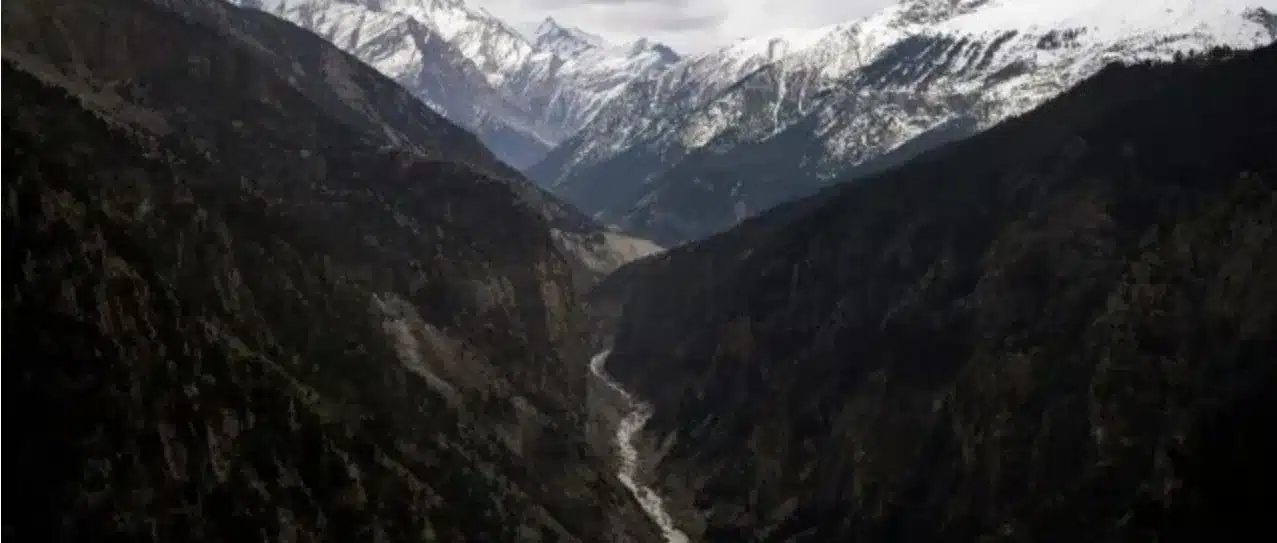What’s in today’s article?
- Why in News?
- Key highlights of the study by ISRO
- What are Glacial lakes?
- Use of remote-sensing technology to monitor glacial lakes
- Mitigation of risks posed by glacial lakes
Why in News?
Recently, the Indian Space Research Organisation (ISRO) released satellite-data-based analysis on the expansion of glacial lakes in the catchments of Indian Himalayan River basins.
This is the latest among a series of studies on glacial lakes that have highlighted the risks of glacial lake outburst floods (GLOFs), and their impact on infrastructure and settlements downstream of such lakes.
Key highlights of the study by ISRO
- The study
- ISRO’s analysis looked at satellite data archives spanning the past four decades to assess changes in the glaciated environment.
- Long-term satellite imagery covering the catchments of Indian Himalayan River basins — spread over India, Nepal, Tibet, and Bhutan — is available from 1984 onwards, till 2023.
- Findings
- ISRO’s data has indicated significant expansion in the size of glacial lakes.
- Of the 2,431 lakes larger than 10 hectares (identified during 2016-17), 676 glacial lakes had expanded significantly since 1984.
- ISRO said that 130 of the 676 lakes are situated in India, in the Indus (65), Ganga (7), and Brahmaputra (58) river basins.
- These lakes have expanded as glaciers are retreating at an ever-faster rate due to global warming.
What are Glacial lakes?
- About
- Glacial lakes are bodies of water that form in depressions or basins created by the erosive action of glaciers.
- These lakes are typically found in regions where glaciers have previously existed or are currently present.
- Glacial lakes vary in size and shape, ranging from small ponds to large, deep bodies of water.
- ISRO categorised glacial lakes into four broad categories based on how they were formed — moraine-dammed, ice-dammed, erosion-based, and ‘others’.
- Glacial lakes are crucial sources of freshwater for rivers.
- However, they also pose significant risks, specifically of Glacial Lake Outburst Floods (GLOFs).
- GLOFs occur when glacial lakes release large volumes of meltwater due to the failure of natural dams, resulting in sudden and severe flooding downstream.
- Formation
- Glacial Erosion:
- Glaciers are massive bodies of ice that move slowly over the landscape, eroding and shaping the underlying bedrock through processes such as abrasion and plucking.
- As glaciers advance, they carve out deep valleys and basins in the landscape.
- Deposition of Glacial Moraines
- As glaciers move, they carry vast amounts of sediment and debris, including rocks, gravel, and sand.
- When glaciers retreat or melt, they deposit this material at their edges, forming features called moraines.
- Moraines can act as natural dams, blocking the flow of water and creating depressions where glacial lakes can form.
- Melting Ice
- As temperatures rise or glaciers retreat, the ice within the glacier melts, filling the depressions created by glacial erosion with water.
- This water collects in the basins, forming glacial lakes.
- Terminal Moraine Formation
- In some cases, glaciers deposit large ridges of sediment and debris at their terminus, creating natural dams that impound water and form glacial lakes behind them. These lakes are called terminal moraine lakes.
- Glacial Erosion:
Use of Remote-Sensing Technology to Monitor Glacial Lakes
- The monitoring of glacial lakes and their expansion in the Himalayan region is challenging due to the rugged terrain.
- This is where satellite remote-sensing technology proves to be an excellent tool.
- Analyzing changes in glacial lakes using satellite data helps us understand how these lakes are changing over time.
- This information is crucial for figuring out how they affect the environment and for creating plans to manage the risks of glacial lake outburst floods and adapt to climate change in areas with glaciers.
Mitigation of Risks posed by Glacial Lakes
- As per one study, lowering of the lake levels by 10 to 30 m significantly reduces the impacts on downward towns.
- Although it does not completely eliminate the risks posed by a GLOM event.
- One way to syphon off lake water is by using long High-Density Polyethylene (HDPE) pipes.
- In 2016, members of the Sikkim State Disaster Management Authority used this method to reduce water levels in Sikkim’s South Lhonak Lake.
Q.1. What is Indian Space Research Organisation (ISRO)?
The Indian Space Research Organisation (ISRO) is India’s national research organization, founded on August 15, 1969 by Vikram Sarabhai. ISRO’s headquarters are in Bengaluru and its parent organization is the Department of Space.
Q.2. What is remote sensing?
Remote sensing is the process of collecting data about an object or location without making physical contact with it. It’s a type of geospatial technology that uses aircraft-based and satellite-based sensors to detect and monitor the physical characteristics of an area by measuring its reflected and emitted radiation at a distance.
Source: How ISRO used satellite remote-sensing to analyse glacial lakes in Himalayas
Last updated on June, 2025
→ UPSC Notification 2025 was released on 22nd January 2025.
→ UPSC Prelims Result 2025 is out now for the CSE held on 25 May 2025.
→ UPSC Prelims Question Paper 2025 and Unofficial Prelims Answer Key 2025 are available now.
→ UPSC Calendar 2026 is released on 15th May, 2025.
→ The UPSC Vacancy 2025 were released 1129, out of which 979 were for UPSC CSE and remaining 150 are for UPSC IFoS.
→ UPSC Mains 2025 will be conducted on 22nd August 2025.
→ UPSC Prelims 2026 will be conducted on 24th May, 2026 & UPSC Mains 2026 will be conducted on 21st August 2026.
→ The UPSC Selection Process is of 3 stages-Prelims, Mains and Interview.
→ UPSC Result 2024 is released with latest UPSC Marksheet 2024. Check Now!
→ UPSC Toppers List 2024 is released now. Shakti Dubey is UPSC AIR 1 2024 Topper.
→ Also check Best IAS Coaching in Delhi






















